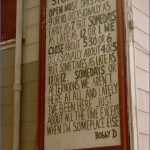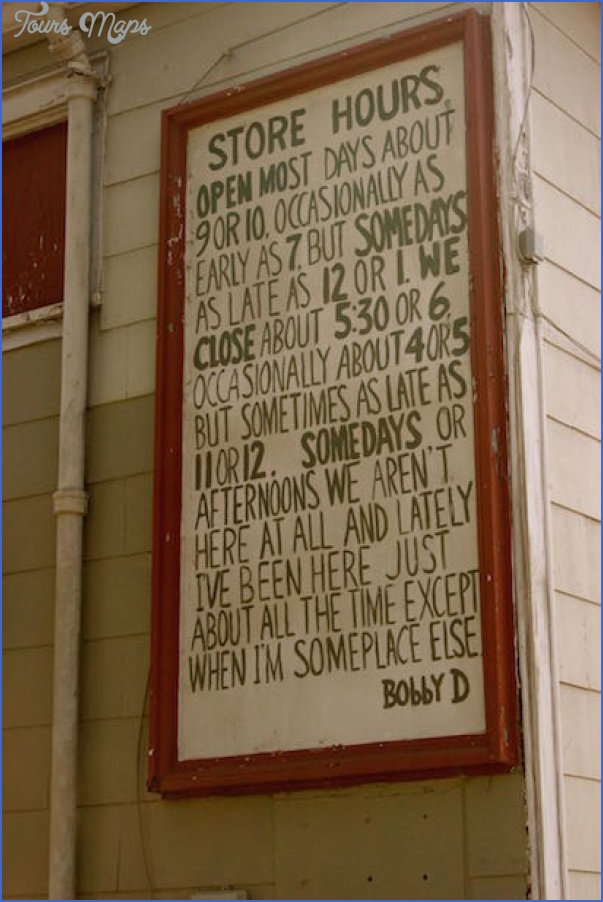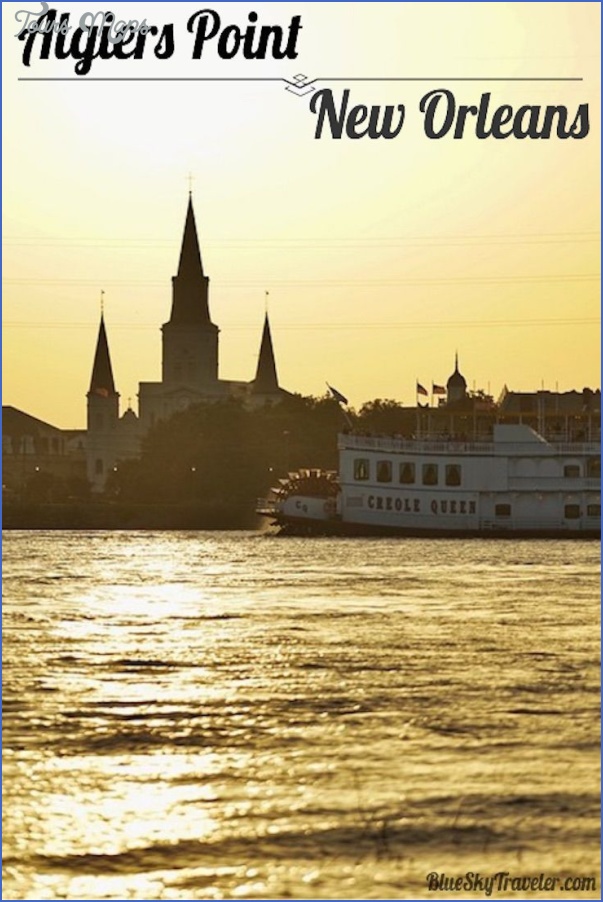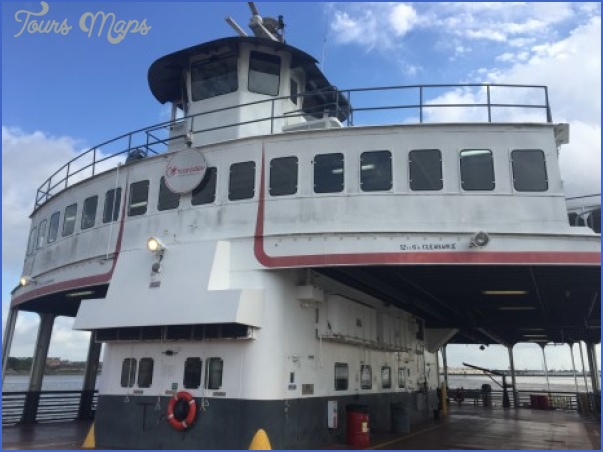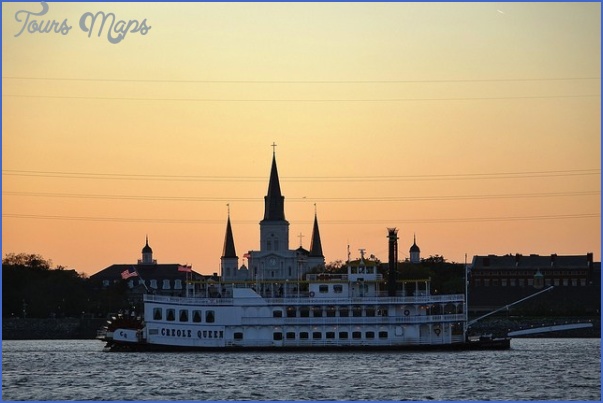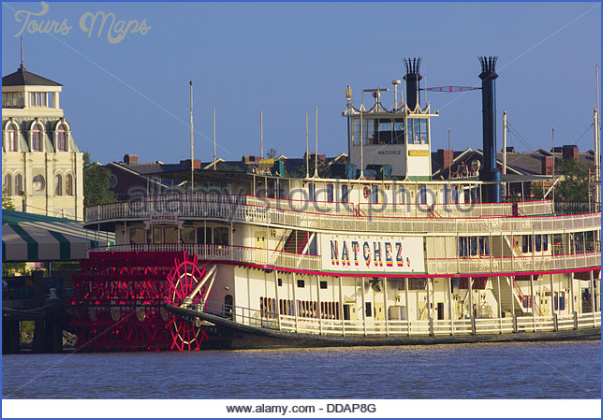The French Quarter is the epicenter of New Orleans. The food, the art, the music, the sensibility of the city they all began here. When locals who live in other neighborhoods come here, they may grumble about the tourists, the lack of parking, and even the smell of Bourbon Street, but the truth is, we all love the French Quarter. We have all made some amazing memories here, and we have all spent at least one night here that we simultaneously look upon with regret and/or pride.
The French founded New Orleans in 1718, and in 1721 they laid out the grid for its oldest neighborhood, then called the Vieux Carre, meaning Old Square. France controlled the colony until 1763, when they turned it over to Spain. In 1788, a large fire swept through the city, burning over 80 percent of the buildings. Spain rebuilt the town, and most of that architecture remains, so the area called the French Quarter is actually full of Spanish architecture. Every visitor has heard of this neighborhood, and it’s where most spend their time, but people often confine themselves to about eight or ten blocks near Canal Street and the Mississippi River. That’s a shame, because the French Quarter is much more diverse than its famous Bourbon Street would indicate. It’s a neighborhood that has lured bohemians and artists, and it remains a haven for creative people.
Just across the river from the French Quarter, and accessible by a ten-minute ferry ride, lies Algiers, the second-oldest neighborhood in the city. Originally a staging ground for immigrants and later enslaved workers brought from Africa, this neighborhood grew in charm and wealth in the midnineteenth century. Algiers Point, the area at the ferry’s landing, is a time capsule of that era, with rows of perfectly preserved, ornately embellished homes. The view of downtown New Orleans from the ferry and Algiers Point is not to be missed, but if you do go, make sure to bring exact change for the ride ($2 each way) and check the timetable so you won’t miss the last boat back.
The French Quarter
Bourbon Street: All of it
This is not a typical entry for this guide, but Bourbon Street is not a typical place. You may think that in condensing the many bars of Bourbon Street into one entry, I am giving them short shrift, essentially telling you to avoid this strip. I am not. It’s an essential part of the full New Orleans experience. But while some bars on this street do differentiate themselves from the rest and they are presented later in this chapter on the whole, going out on Bourbon Street does not consist of separate experiences in discrete establishments. Instead, your night (and/or morning) is truly the sum of its parts, and many of those parts don’t occur inside a bar. At some point the entire street is, in fact, your bar.
First, a little history. Bourbon Street has not always been a tourist destination, nor a haven of bars and clubs. For most of its existence, it was a residential area that gradually developed into a commercial zone. If you were from out of town in the nineteenth century and looking for a good time, you didn’t visit Bourbon Street. Instead, you either stayed near the wharf, drinking with sailors, or headed to Storyville, a section of the French Quarter and Treme where prostitution and gambling were legally sanctioned from 1895 to 1917. When the city closed Storyville, several of the club owners relocated their establishments to Bourbon. But it wasn’t until World War II brought thousands of thirsty servicemen looking for one last hurrah in a city known for a good time that Bourbon Street’s character as a party street began to develop.
In the 1970s, with the advent of cheap plastic cups, bars began selling drinks through windows to patrons on the sidewalk, which increased pedestrian traffic. This was also when the city closed the street to cars in the evenings, cementing its place as a never-ending street party. As you stroll, remember that Bourbon Street grew organically and remains its own living self. There is no Bourbon Street committee that has planned this place.
So that’s what the street was. Let’s talk about what is. Three-for-one drinks. Neon. Historic buildings. Strip clubs. Music clubs. Souvenir shops. Restaurants. Bars. Street performers. Homeless people. Parents with children. Drunks. Bartenders. Hawkers. Cops. Cover bands. Jazz bands. Karaoke. Second lines. Urine. Vomit. Litter. And liquor. Everywhere.
As you walk, you’ll encounter the same types of bars up and down Bourbon Street over and over. The first are music venues, which host cover bands playing classic-rock favorites. These spots offer drink specials all day and night, usually three for one. Bear in mind, these places can sometimes stiff you as they fill your enormous go-cup with more soda than whiskey. If you stick with beer, you can be assured you are getting what you paid for. Many of these venues also have balconies where patrons can hang out and gawk at passing pedestrians below. You might be tempted to cajole someone into baring flesh for beads, though if it’s not Mardi Gras, you may be disappointed with the results. None of these spots are really better than the others. Let the cover band be your guide. If they are playing a song you like, go in. You may end up staying all night.
Then come the places where you aren’t meant to linger. Bourbon Street is best experienced while strolling with a drink in hand, and many places that line it are set up to facilitate just that. Frozen daiquiri shops and walk-up bars offer drinks that keep pedestrians well fueled for the night. Frozen daiquiris are like slushies with alcohol. They come in more flavors than you can imagine in colors not present in the natural world. If it’s slow, the bartenders there will often let you have a sample, since the flavors WTF or Panty Dropper might be hard to describe. Other walk-up bars offer drinks served in absurdly shaped or absurdly large cups: big-ass beers, fishbowls, jesters, hand grenades, and, of course, hurricanes are all on offer.
Finally, Bourbon Street is also home to numerous strip clubs, but I’m not including them in my definition of bars, because you’re not going there to drink. You’re mostly going for the view.
Locals have lots to say about the street, and most of it is negative: It’s touristy. It’s vulgar. It doesn’t embody what New Orleans is really about. It’s inauthentic. It’s crowded. It smells. Unsurprisingly, locals often avoid Bourbon Street. Instead, they smugly say Oh, I only go to Frenchmen St./St. Claude. That’s where the real New Orleans is. But this rejection means they miss out on a very special adventure that happens in their own backyard, an amazing intersection of private fun and public experience. I have to admit, I once held their attitude, but then one night, while out with friends, we decided to hit Bourbon Street just for fun. And you know what? We had a really good time. We drank and danced and walked along the strip with all the other folks who have traveled to do this very same thing. Bourbon Street is teeming with people who are all there to enjoy themselves, cut loose, maybe have a little too much to drink, stay out later than the bars back home would ever allow, dance, laugh, and wake up feeling terrible but not so awful that they don’t want to do it again. Bourbon Street is not a place to start your night. You probably shouldn’t go there totally sober. And you certainly don’t have to stay there. But you should definitely go, and, as the Buddhists say, go with an open heart.
Decorated with images of Prohibition protesters and mobsters, 21st Amendment sits across from the madness of the line at the Acme Oyster House. Its name honors the repeal of Prohibition, and its vibe echoes that celebratory time in the city. The bar is located in the former La Louisiane Restaurant and Hotel, home of the La Louisiane cocktail. The bar makes a good one, and it also turns out quality standard classics like a Bee’s Knees and a twist on a French 75. The 21st Amendment is a cocktail bar in the midst of a crowd that may not know much about them Their menu gives detailed descriptions of the flavor profiles of each signature drink, with key elements italicized for eyes that might be already a bit blurred from nearby Bourbon Street.
The bar hosts a variety of live music each night, so while the drink prices may seem a bit steep, once you factor in what is essentially cover for the band, it’s a good value. If you are standing in the eternal line at Acme, you may as well be drinking something delicious while you wait. Have your friend hold your spot and return with a La Louisiane.
The French Quarter and Algiers New Orleans Photo Gallery
Maybe You Like Them Too
- Explore Doncaster, United Kingdom with this detailed map
- Explore Arroyito, Argentina with this Detailed Map
- Explore Belin, Romania with this detailed map
- Explore Almudévar, Spain with this detailed map
- Explore Aguarón, Spain with this detailed map


